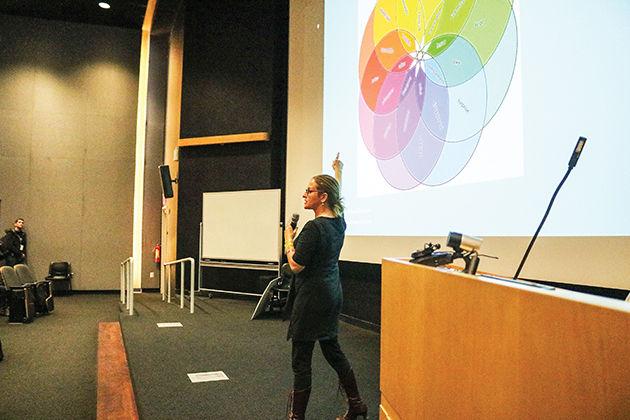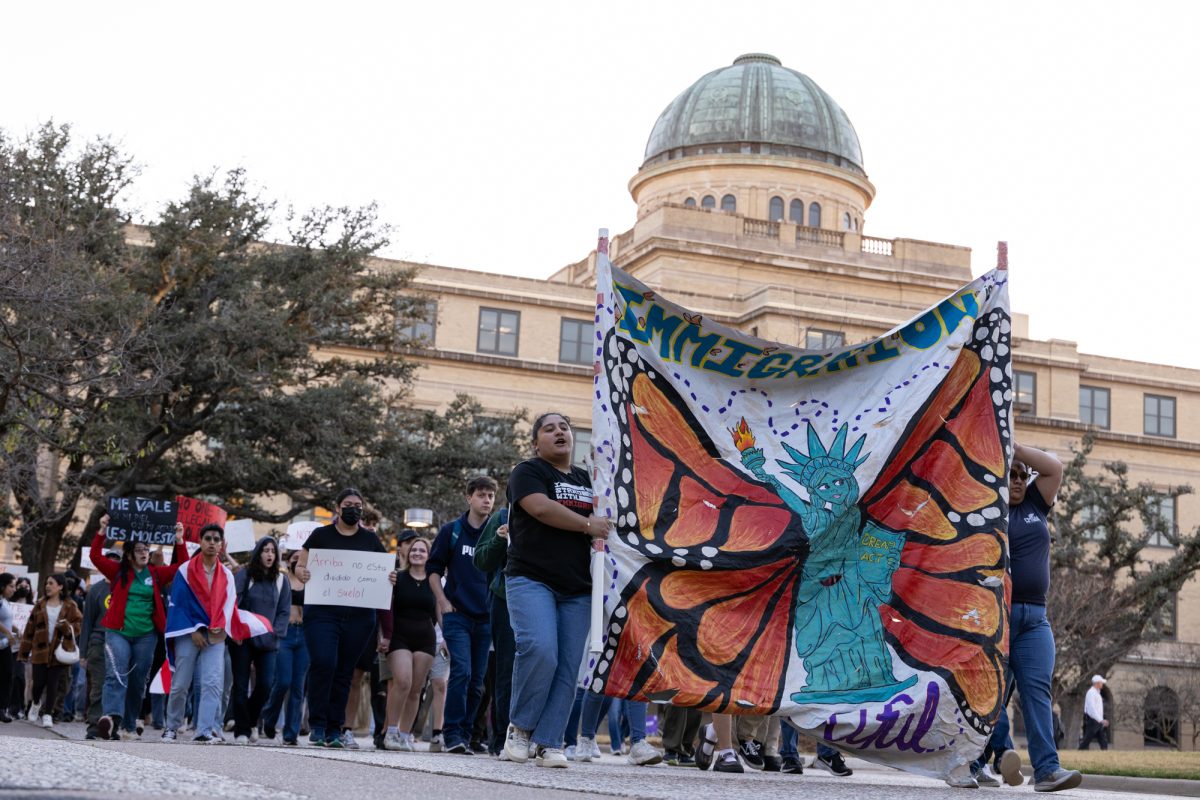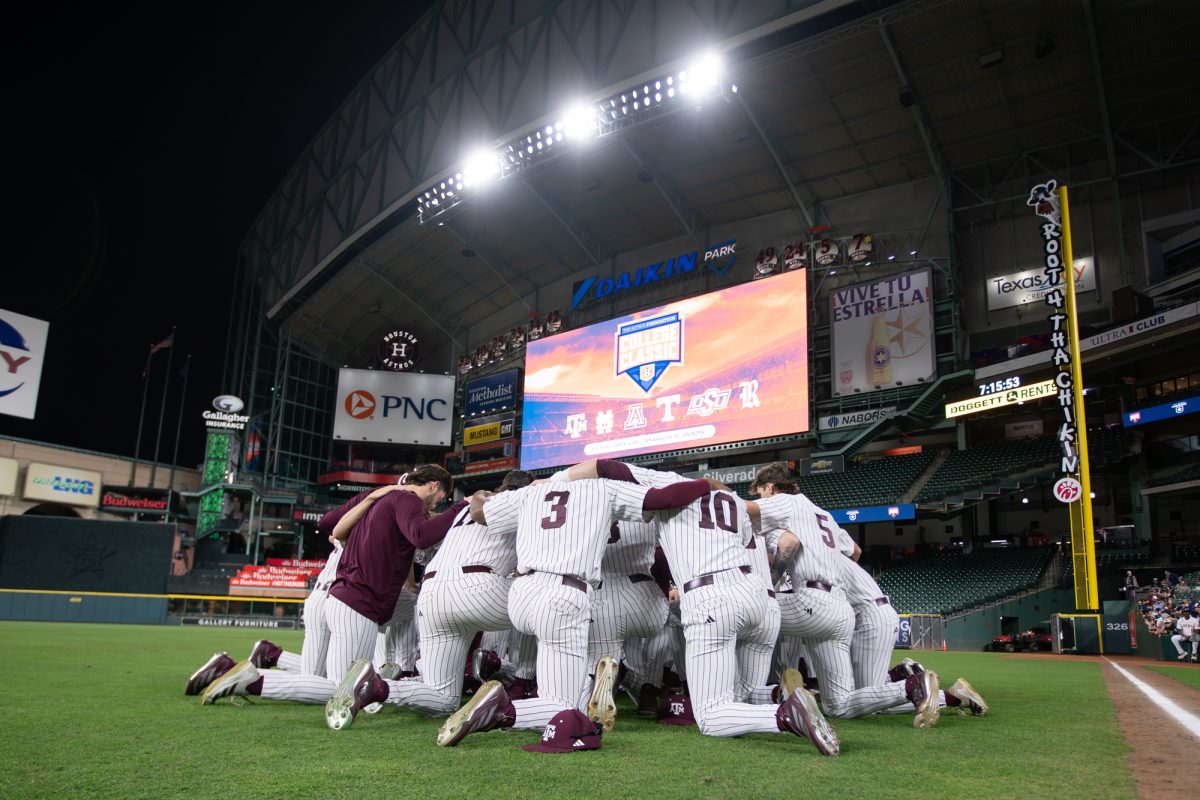In hopes of exploring different emotional experiences in Bryan-College Station, Austin artist Jennifer Chenoweth showcased her interactive map, XYZ Atlas, at the College of Architecture’s 2016 Open Data Build Day.
The artist’s work was featured during a 24-hour competition Friday and Saturday, in which participants were tasked with illustrating problems regarding diversity at Texas A&M and in the Bryan-College Station area.
Through a series of six challenges, participants were told to use data from public agencies, like the U.S. Census, to spatially demonstrate problems chosen by the College of Architecture’s Diversity Council. Participants were then asked to propose solutions to the problems based on their findings. Build Day awarded a total of $5,000 in prize money for solutions.
Participants were encouraged by Chenoweth to explore her project themselves, specifically to see if they could utilize her map in their challenges.
Chenoweth laid out a large scale map of the Bryan-College Station region in
the Architectural Quad, between the Liberal Arts Building and the Administration Building. Participants were given colored flags that represented emotions such as fear, amazement or disgust, and were told to place the flags on the map in locations where they had memorable experiences related to corresponding emotions. After the data was collected, Chenoweth turned it into a color-coded topographical map.
Some of the challenges presented at Build Day related to how to increase the popularity of a local African American museum and how to solving the issue of unequal representation in the Bryan Police Department.
“What I love about this project is that it’s totally outside of class and race, so everybody’s experiences matter,” Chenoweth said. “And try to do community outreach and activities so that people could give us anonymous survey data, so that they feel safe communicating about where they’ve had good and bad experiences in B-CS, and create the ‘topomap’ of everybody’s experiences is B-CS.”
Chenoweth said she began her project by asking participants questions.
“We started with a set of 20 questions — 10 questions about positive experiences, and 10 questions about negative experiences,” Chenoweth said. “Those are all color-coded to psychologist Robert Plutchik’s chart of emotions.”
Chenoweth said she took this color chart and made it into a venn-diagram type color wheel for the participants to refer to.
“I’m excited about it, because it’s a tool for me to visualize emotional wholeness,” Chenoweth said. “It’s a tool for me to be able to accept things that sometimes feel unacceptable.”
Chenoweth said she created a 2-D map by marking out the location of participants’ experiences. Then she created a 3-D topographical map by considering whether the experience was positive or negative. Locations with negative experiences moved downward and locations with positive experiences moved upward on Chenoweth’s topographical map.
Chenoweth said she came up with the idea of XYZ Atlas when talking with friends about how people create emotional attachments to places based on experiences, and thought it would be interesting to visualize these collective places where people share the same emotional experiences.
Tiffany Cousins, an urban and regional planning graduate student, participated in XYZ Atlas.
“Everyone has their [own] emotions, and depending on who you are, your emotions of a place can vary from different people,” Cousins said. “Let’s take A&M for example. We both go here, but you could say, ‘It’s the best years of my life’ while I could say, ‘It was the worst years of my life.’ It depends on where you’re from, your race and other factors. “
Zachary Dunn, architecture graduate student and participant, said Chenoweth’s emotional topographical map spiked his interest.
“In College Station, it’s definitely a dynamic area and has a lot of culture,” Dunn said.
Build Day is just one of the many events where XYZ Atlas will be recognized. Chenoweth plans to continue her project in Aggieland in the fall.
“The more people we expose [XYZ Atlas] to, the more feedback we get about how to make it better,” Chenoweth said. “And that’s kind of a two way street of inspiration.”










